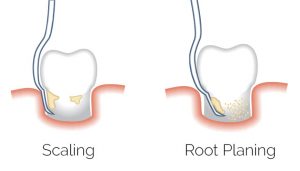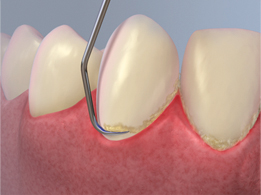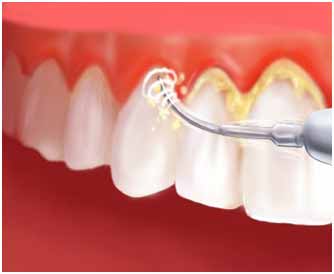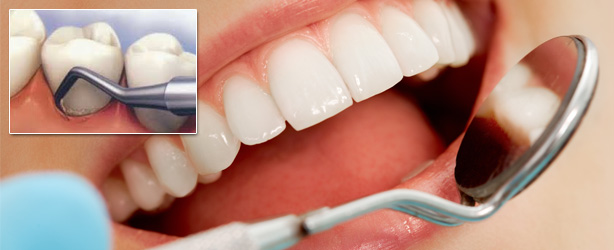Prevention and early treatment of Gum Disease is essential. Cleaning of teeth at least once a year by a dentist is advisable.We use Prophy Jet to remove stubborn Pan-Masala and Tobacco stains.
Scaling and root planing is also known as conventional periodontal therapy or non-surgical periodontal therapy. It’s main objective is to remove and eliminate the etiologic agents which are the cause of inflammation: dental plaque, its products and calculus. It helps to establish a periodontium that is free of disease.
Periodontal scaling procedures “include the removal of plaque, calculus and stain from the crown and root surfaces of teeth, whereas root planing is a specific treatment that removes the roughened cementum and surface dentin that is impregnated with calculus, microorganisms and their toxins.”
The meaning of Dental Scaling and Oro-dental Hygiene

Scaling and root planing are often referred to as deep cleaning, and may be performed using a number of dental tools, including ultrasonic instruments and hand instruments, such as periodontal scalers and curettes.
- Tartar and plaque removal removes diseases relating to gums and is considered as the most effective precaution to avoid pain and wasting.
- Tartar provokes risk of bleeding, leading to periodontal disease and looseness of tooth happening as a result.
- Therefore, oro-dental hygiene is extremely essential, it is considered as the best way to avoid the risk of bleeding, swollen gums, receding gums, reduce discomfort due to gingivitis, prevent tooth loss and jawbone resorption.

Hand instruments

Ultrasonic instrument
Sonic and ultrasonic scalers are powered by a system that causes the tip to vibrate. Sonic scalers are typically powered by an air-driven turbine. Ultrasonic scalers typically use either magnetostrictive or piezoelectric systems to create vibration.
Magnetostrictive scalers use a stack of metal plates bonded to the tool tip. The stack is induced to vibrate by an external coil connected to an AC source. Many ultrasonic scalers also include a liquid output or lavage, which aids in cooling the tool during use. T
he lavage can also be used to deliver antimicrobial agents. There is some debate over whether there is an advantage to sonic or ultrasonic scaling over hand scaling and some issues arise from powered scalers. However, powered scalers tend to create aerosols, which can spread pathogens.


